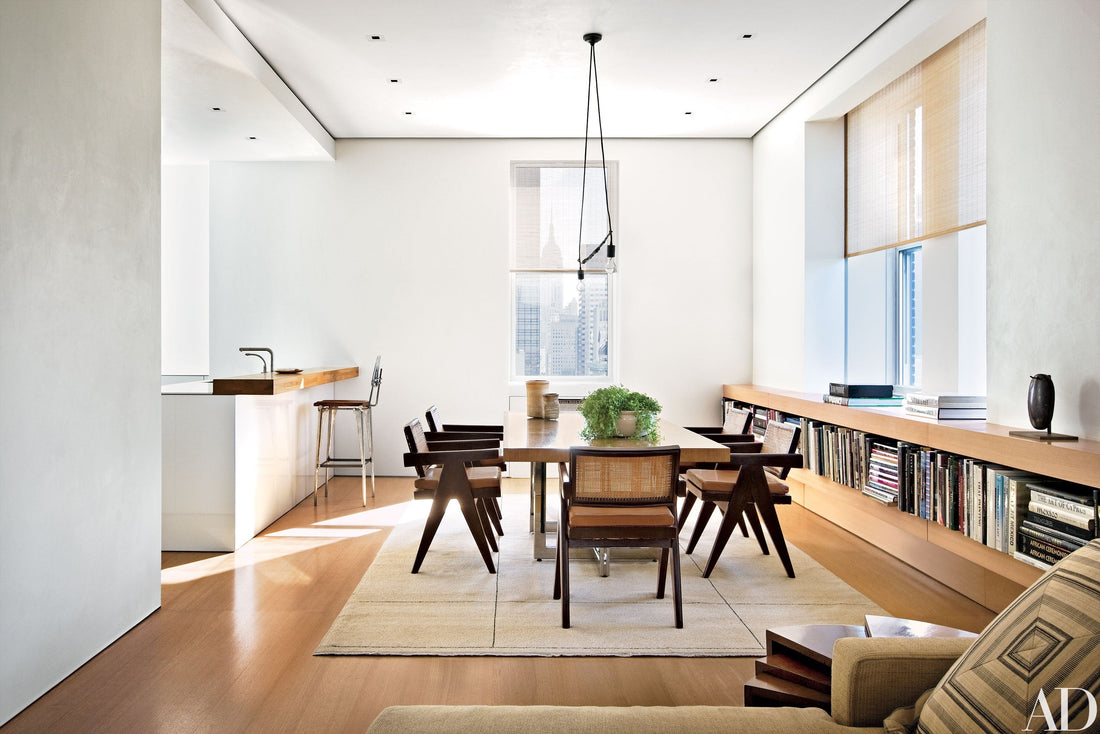
Pierre Jeanneret Furniture: Timeless Elegance and Mid-Century Modern Design
Pierre Jeanneret, a name synonymous with mid-century modern design, is celebrated for his timeless furniture creations that have left an indelible mark on the world of interior decor. Collaborating closely with his cousin, Charles-Édouard Jeanneret-Gris, famously known as Le Corbusier, Pierre Jeanneret co-authored some of the most iconic and influential pieces of the 20th century. In this comprehensive exploration, we'll delve into the legacy of Pierre Jeanneret, the hallmark elements of his furniture designs, and how his timeless pieces continue to shape contemporary interiors. Whether you're a design enthusiast or simply curious about the man behind the legendary chairs and furniture, join us on this journey into the world of Pierre Jeanneret.
The Life and Design Philosophy of Pierre Jeanneret
Pierre Jeanneret was born in Switzerland in 1896 and was a prominent architect, urban planner, and furniture designer. His design philosophy was deeply rooted in functionality, comfort, and an appreciation for the natural materials used in his creations. This philosophy was strongly influenced by his close collaboration with Le Corbusier, and together they sought to create furniture that responded to the needs of modern living.
Jeanneret's furniture designs were often characterized by clean lines, simplicity, and a harmonious blend of form and function. He believed that furniture should serve a practical purpose while enhancing the overall aesthetics of a space. His work often featured natural materials like wood and cane, celebrating their inherent beauty and warmth.
Iconic Pierre Jeanneret Chairs and Furniture
Pierre Jeanneret's portfolio boasts an impressive array of chairs, tables, and storage solutions that have become timeless classics. Here are some of his most iconic pieces:
-
The Chandigarh Chair: Perhaps the most famous of Jeanneret's designs, the Chandigarh Chair, was originally created for the government buildings in Chandigarh, India. Its sleek wooden frame and woven cane seat and backrest make it an emblem of mid-century modern design.
-
The Capitol Complex Table: This elegant and functional table was designed as part of the Chandigarh project and features a simple yet striking design, with a wooden top and angled legs that exude sophistication.
-
The Library Chair: Known for its ergonomic design and comfortable seating, the Library Chair remains a sought-after piece for those who value both style and functionality.
-
The Scissor Chair: Characterized by its folding mechanism and distinctive scissor-like legs, this chair is a testament to Jeanneret's commitment to innovative design.
-
The Kangaroo Chair: With its unique form that resembles a kangaroo's pouch, this chair is a playful yet functional addition to any interior space.
Pierre Jeanneret's Influence on Contemporary Design
While Pierre Jeanneret's career reached its peak in the mid-20th century, his design principles and aesthetics continue to influence contemporary interior design. Interior designers and furniture enthusiasts alike draw inspiration from his emphasis on clean lines, functionality, and the use of natural materials.
The enduring appeal of Jeanneret's designs lies in their ability to seamlessly integrate into a wide range of interior styles. Whether your decor leans towards minimalist, bohemian, industrial, or classic, Jeanneret's pieces possess a timeless quality that effortlessly complements various design aesthetics.
Many contemporary furniture designers and manufacturers pay homage to Pierre Jeanneret by creating pieces inspired by his work. These reinterpretations capture the essence of his designs while incorporating modern materials and production techniques.
Collecting Pierre Jeanneret Furniture: A Worthy Pursuit
For collectors and connoisseurs of design, acquiring authentic Pierre Jeanneret furniture is akin to owning a piece of history. However, it's important to exercise due diligence when purchasing these coveted pieces.
Verify the authenticity of Jeanneret furniture by checking for maker's marks, original labels, or documentation that traces the provenance of the piece. Given the rising demand for these designs, it's crucial to consult experts or reputable dealers to ensure authenticity.
While original Jeanneret pieces can command significant prices, the investment is often considered worthwhile due to their historical and aesthetic value. They not only serve as functional furniture but also as collectible design objects that appreciate in value over time.
For those who appreciate Jeanneret's aesthetics but may have budget constraints, there are quality reproductions and reinterpretations available. These pieces capture the essence of his designs and offer an accessible way to incorporate his iconic furniture into your home.
Conclusion
Pierre Jeanneret's enduring legacy in the world of design continues to captivate and inspire enthusiasts and professionals alike. His ability to seamlessly blend form and function, his emphasis on natural materials, and his dedication to creating timeless pieces have left an indelible mark on the world of interior decor.
As we journey through the designs of Pierre Jeanneret, we're reminded of the power of simplicity, functionality, and the enduring allure of mid-century modern aesthetics. His iconic chairs, tables, and storage solutions continue to be cherished additions to contemporary interiors, reaffirming that great design transcends time and trends.
For those fortunate enough to own an authentic Pierre Jeanneret piece, it's not just a piece of furniture but a piece of history, a work of art, and a testament to the enduring appeal of one of the greatest designers of the 20th century.
